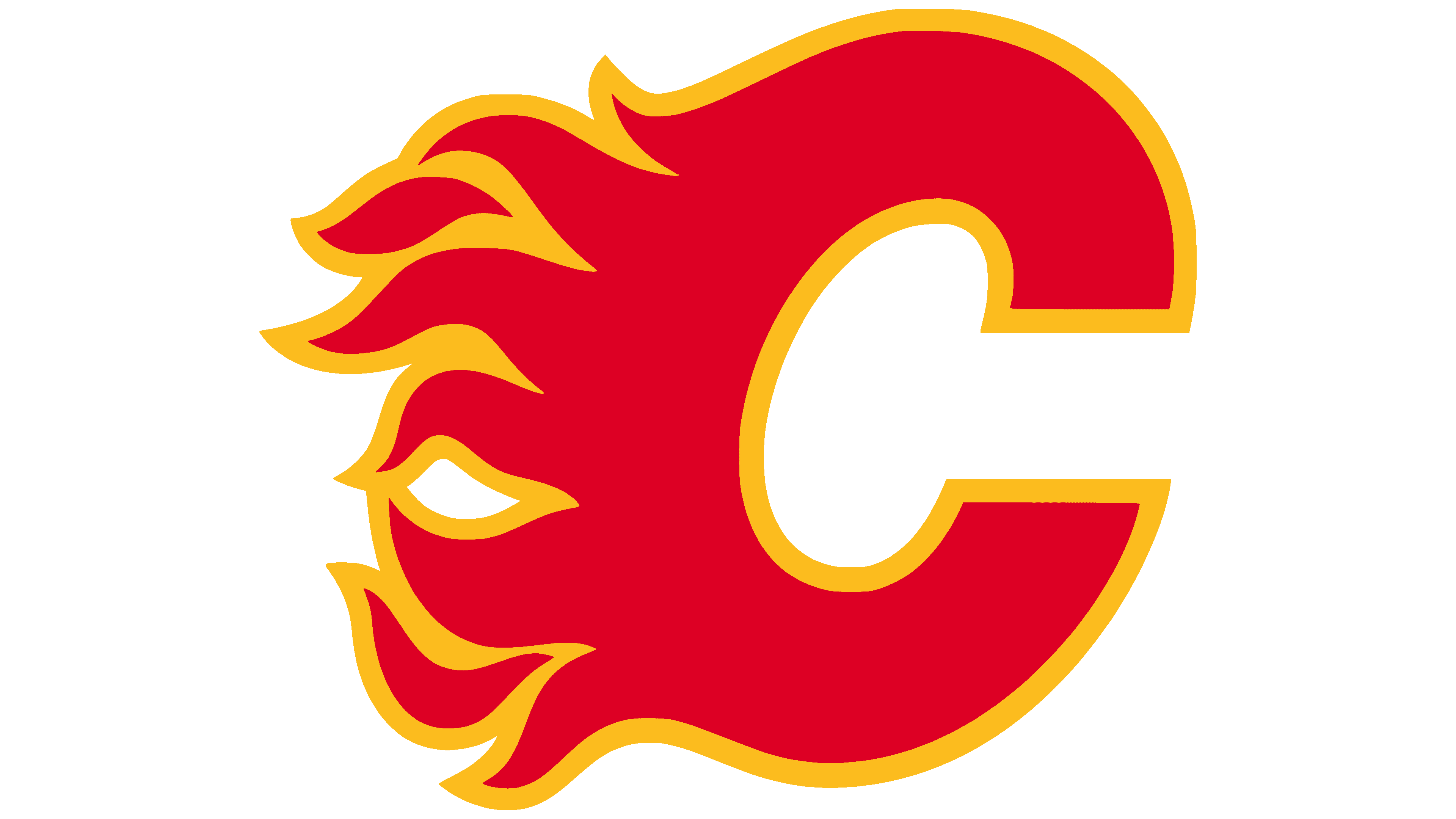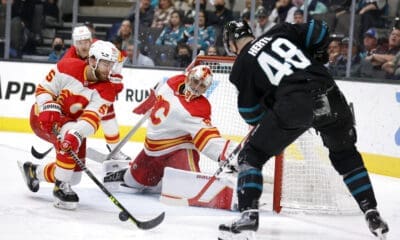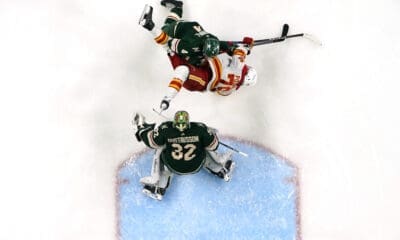Calgary Flames
Happy International Women’s Day, Support Women’s Hockey
Happy International Women’s Day! Let’s look at the growth of the game.

Believe it or not, but female hockey players actually DO play more than once every four years. Who would have thought?
This piece is part two of our International Women’s Day series. Two days ago, we talked about the Calgary Inferno GM Kristen Hagg and how she was somewhat of the behind-the-scenes hero for Team Canada when she offered pro bono work. Today, let’s look at the growth of the game.
Over the last few years, the support and recognition for women’s hockey has come a long way. But there’s still an even longer way to go. However, we can’t discredit the amount of progress these women have made with barely any support to start off.
There are many different ways to watch women’s games now than there were 10-15 years ago (go to the Ice Garden to see all the different leagues and options for viewing) and different leagues were started by women with a passion for the sport. That’s the difference between men’s leagues and women’s leagues.
Not to discredit the NHL or to say that men don’t have a passion for hockey, but they get paid millions every year to play the sport they love. These women don’t. And for a while, they didn’t even get paid and were putting thousands of dollars a year for their passion. This year is the first year that the CWHL has begun to pay its players. While it’s only $100,000 cap for every team, it’s big progress. But splitting that much between ~23 players isn’t exactly a livable income.
Which is why most of the players still have full-time jobs on top of being professional athletes. That’s true passion for the game.
Players like Jacquie Pierri and Brittany Esposito for the Calgary Inferno know first hand how hard it was initially. I talked to Jacquie a few months ago and she mentioned how the little things you don’t think about adding up, like travel, meals on the road, the gym, a trainer, equipment, if you break your stick, you have to buy a new one. Add that on top of working full-time and it’s hard to give your body a break.
For Pierri, one of the harder things, when the league started out, was the three-day game series, since it was cheaper for travel.
“The toughest thing for me was the three-game series,” said Pierri. “Back then we played Friday, Saturday, Sunday to reduce the number of road trips (for cost savings). Playing on Friday evening after a full week of work was exhausting. And balancing my career with Friday travel was really challenging.”
Esposito reiterated that.
“One of the most difficult parts of my early days in the CWHL was the three-game weekends. We needed to be efficient in our travel, so we would play less weekends but when we did we played games Friday, Saturday and Sunday which was quite exhausting, especially when factoring in travel.”
With the help of volunteers and sponsors, women’s hockey has already come a long way. The travel is easier, they get sponsors for equipment (not all equipment though!), they have team trainers that are provided, etc. While it’s still not where we’d like it to be, it’s immense progress. Especially from where women’s hockey was 15 years ago.
For me, Hayley Wickenheiser was like THE female hockey player growing up. But I was only able to really watch her every four years when I was a kid. Same goes for Espo’s hockey hero.
“Cassie Campbell was my favourite female hockey player growing up. We are very fortunate to have her so involved in our league, calling games and attending Inferno games with her daughter.”
It’s the same kind of story with lots of young girls growing up and watching the game.
“My favourite was Cammy Granato,” Pierri said. “I did all my book reports and school projects on her and had a poster of her with messier in my room. However, I never had an opportunity to watch her or team USA play ever when I was growing up. I’m so glad the game is more accessible now.”
Like I mentioned, a lot of what’s possible is through the help of volunteers. Working with the Inferno’s PR, it’s basically a dream job, even though I don’t get paid. You get front-row seats to awesome hockey and you do what you love and work with wonderful people. And most of the people I interact with at the games and work with are all volunteers too who are there because they want to be and they want to be at the forefront of the growth of the game.
One of the most memorable parts for me this season and something that will continue to stick with me for a while is this interaction I had with Laura Dostaler. Me and two other volunteers were standing outside of the locker room waiting for the players to come out to either get interviews or set them up at the autograph tables. Dostaler, who’s been in the CWHL since 2011 and was also there during the tough times, came out of the room. She approached me and the other two volunteers and out of the blue said, “By the way, I want to thank you guys for all the hard work that you do. I know that nobody really recognizes what you do, but we really appreciate it and you guys are so much help.”
I’m not saying that I cried, but I’m also not saying that I didn’t cry.
Something else that will continue to stick with me is seeing all the little girls at the games and cheering for their favourite players. Since 2016, the Inferno have partnered with Girls Hockey Calgary Jr. Inferno and the players each mentor a different team. When it’s time for autographs, these girls are always so excited and run up to all the players trying to get autographs.
“The Jr inferno partnership is hands down what makes me proudest to be involved with this team,” said Pierri. “It’s huge for the girls to have players to look up to and emulate – for them to know they can have a future in this sport.
“I played boys hockey until university because the opportunities on the girl's side were so limited when I grew up. It was farther travel, less competition, and difficult practice times. I was lucky to have such supportive teammates and coaches growing up and I’m glad to see the growth on the girl's side so that people’s experiences aren’t dependent on how lucky they are with finding an open-minded coach.”
“It’s an amazing feeling, knowing that we can be there for these girls as role models,” said Esposito. “Growing up, I really only saw my female hockey heroes every four years on TV at the Olympics. In Edmonton, we had an early version of the Inferno with the Edmonton Chimos, but even then, there wasn’t much local support or exposure for that team so I rarely had the chance to go to games.”
The same thing can be said for both Pierri and Espo – the support wasn’t there when they were that age. But women’s hockey continues to grow and continues gaining support from the community.
“The two biggest differences I’ve noticed between now and when I first started in the CWHL are the amount of fans we have at games and that we are getting paid to play,” said Esposito. “We’ve seen our Inferno fanbase continue to grow year after year as well as the support we’ve received around the city and in the media. As for being paid, although it is not a livable wage, it’s a step in the right direction for the next generation.”
“Community recognition and involvement,” Pierri seconded. “People recognize the brand and understand the level of hockey a lot more often now.”
While there’s still a long way to go, it’s heading in the right direction. Ways that you can help is to support! Watch a stream, watch a broadcast, buy a hat, go to the local games (CWHL tickets are only $15!).
Happy International Women’s Day, support women’s hockey.
by ramina shlah








